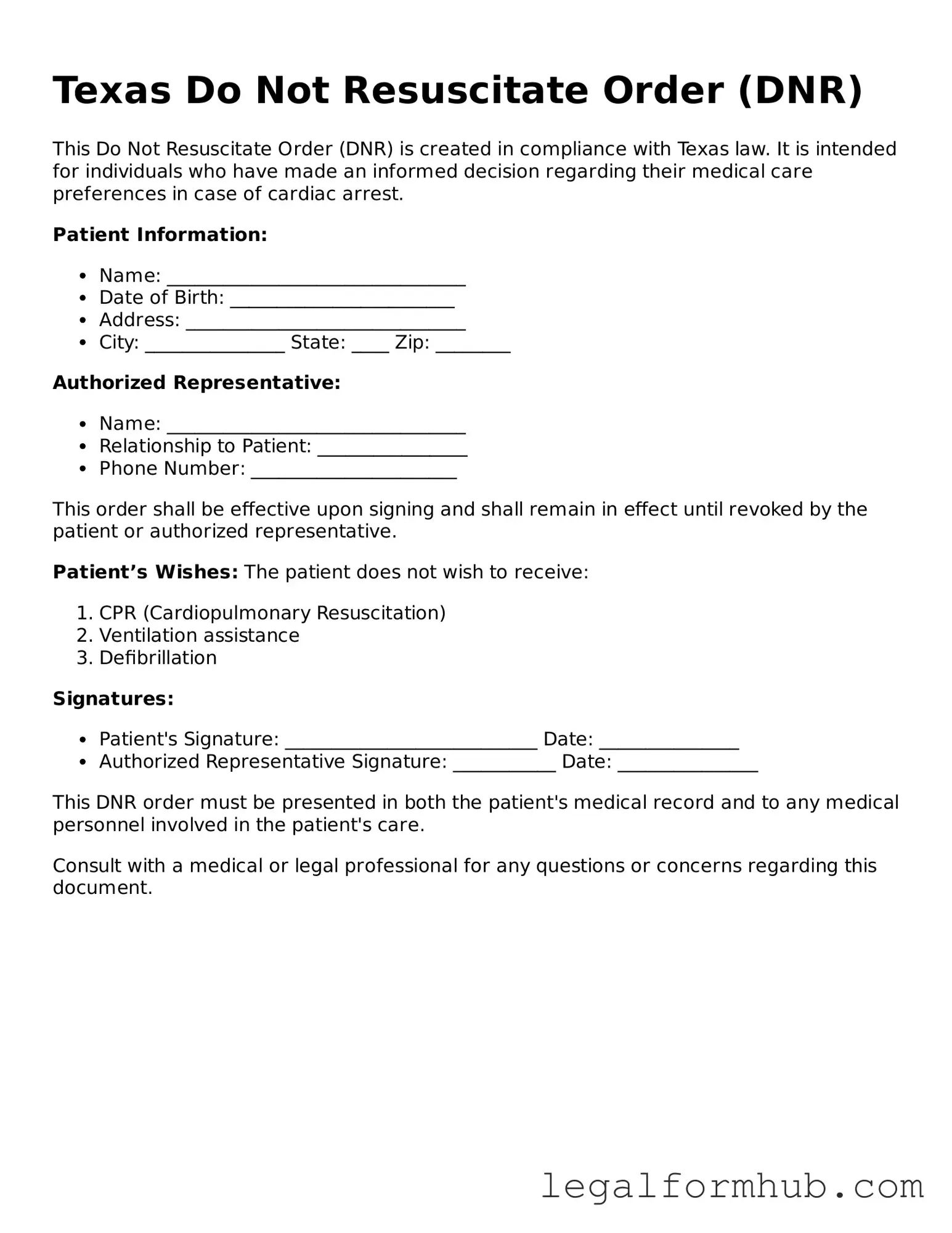Free Do Not Resuscitate Order Template for Texas
A Texas Do Not Resuscitate Order (DNR) form is a legal document that allows individuals to express their wishes regarding resuscitation efforts in the event of a medical emergency. This form ensures that healthcare providers respect a person's desire not to receive life-saving measures, like CPR, when they are facing a terminal condition. Understanding how to properly complete and use this form is essential for anyone considering their end-of-life care options.
Open Do Not Resuscitate Order Editor Here
